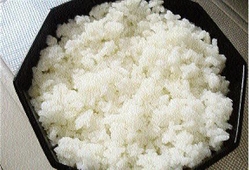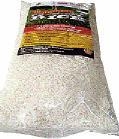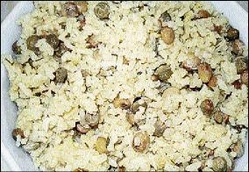
The rice is very easy to cook, so follow instructions carefully or it could end up very soft
In the 1970s, Jamaicans grasped opportunities to do many things to help themselves. The slogan, 'Tun yuh han mek fashion' had several of us producing home-made items and growing what we ate. The '80s also saw several farms of mainly vegetables and fruits. These efforts were not sustained.
We continue to be a nation of samples and just cannot seem to grow enough to feed ourselves for the long term. The saving grace is that there are many Jamaicans for whom living off the land is as natural as breathing and from they achieve hand-eye coordination, were taught to plant something or had a root of bananas or fruit tree assigned to them by wise elders. It was the same with animals. They had to care for the pigs, goats, fowls, cats and dogs because they represented food, money and companionship.
As time passed, Jamaicans developed an insatiable appetite for imported, storehouse-kept food over the highly flavoured, fresh varieties that are grown here. The excuse is that production costs end up higher than import costs, duties and transportation islandwide. That is bad. Meanwhile, foreign suppliers continue to be protected through subsidies and all sorts of restrictions placed on our exports. Will we ever get it?
Return to the land

A sample package of Jamaican grown and packaged rice. - photos by Barbara Ellington
Like his counterparts in Ghana, Agriculture and Fisheries Minister Dr Christopher Tufton has decided that rather than reinvent the wheel, he could once again encourage Jamaicans to return to the land and plant what we eat. To that end, the first harvest of locally grown rice was recently made public. Yes, we can grow rice successfully here. The question is, will we purchase it over the many imported brands that we are now consuming?
Jamaican Premium Rice is a sample of "the first fruits of rice seeds diligently grown for eating pleasure on Jamaican soil at Amity Hall in St Catherine." It is accompanied by easy cooking instructions that must be followed.
I tested a package from the Ministry of Agriculture and, having cooked rice all my life, ignored the instructions and proceeded to cook it the usual way. Wrong move. It is very easy to cook so instructions must be followed, no 'guestimating' here. It requires no more than two cups water to one cup rice. But I salvaged things by spooning out excess water and the result was good.
Bulk rice
This rice does not have the horrible aroma and taste of bulk rice. To test it further, I refrigerated some of it and used it for fried rice three days later. The result was excellent. I also used some to make green gungo peas and rice and this time, I remembered to go easy on the ratio of liquid to rice. Though not as 'shelly' as some parboiled varieties of rice, the result was satisfactory.
The verdict is that I would definitely buy this brand over the imported bulk rice. It requires very little effort to get rid of sediments because it is packaged clean. I hope this was not just for the cameras and when the time comes to market it, the product will be of the same high standard.
The minister is hoping that we will produce at least 10 per cent of what we consume annually. Why not aim to produce 100 per cent? God has given us a head start with arable land. If the young people don't want to plant it, put the prisoners who are living off the state to work from sun up to sun down and let them at least grow all they eat! We have proved (again) that we can grow rice in Jamaica; how about sustaining it?

There is not much to 'pick' out of the rice before washing.

Jamaican grown rice with gungo peas.